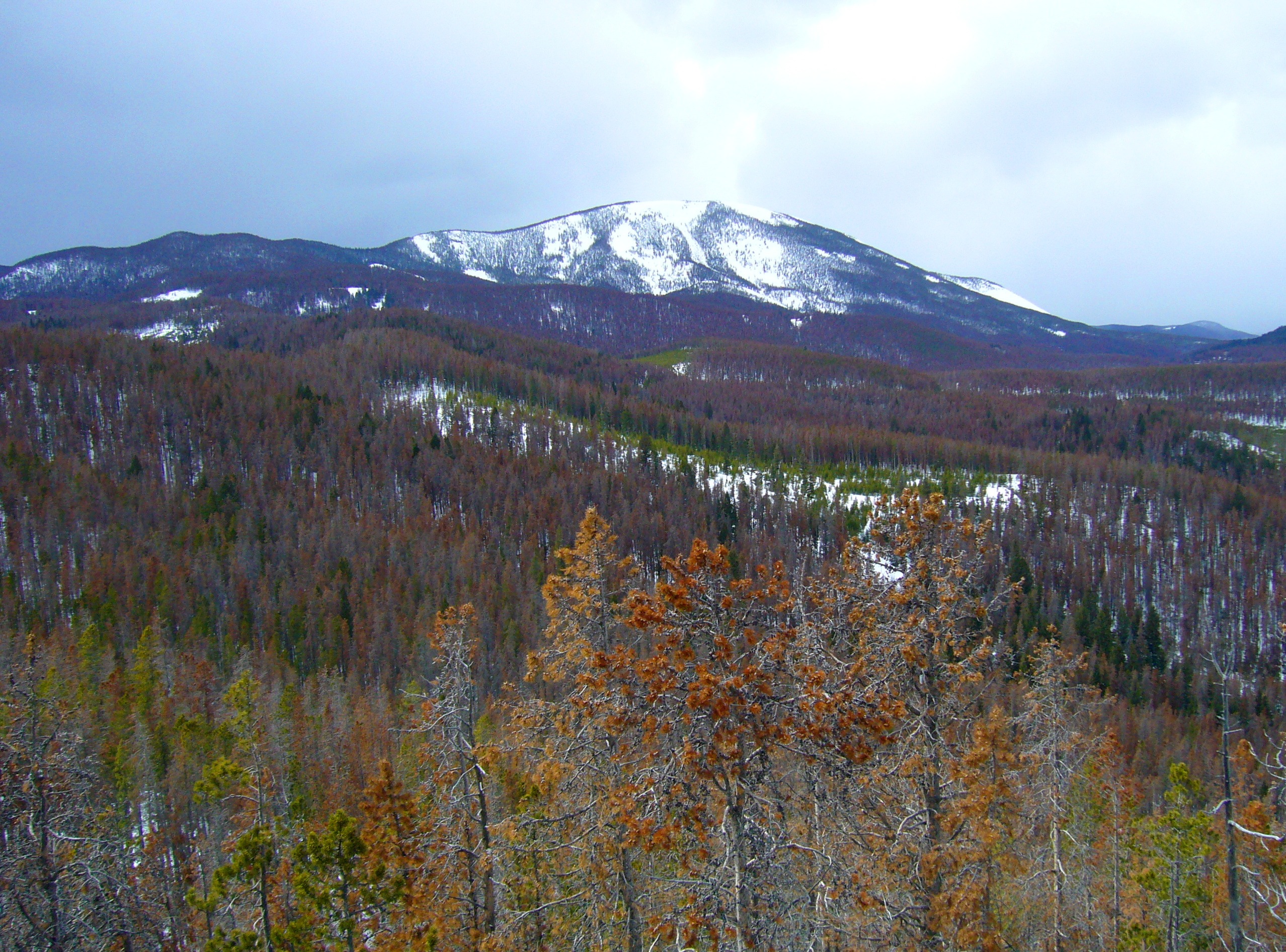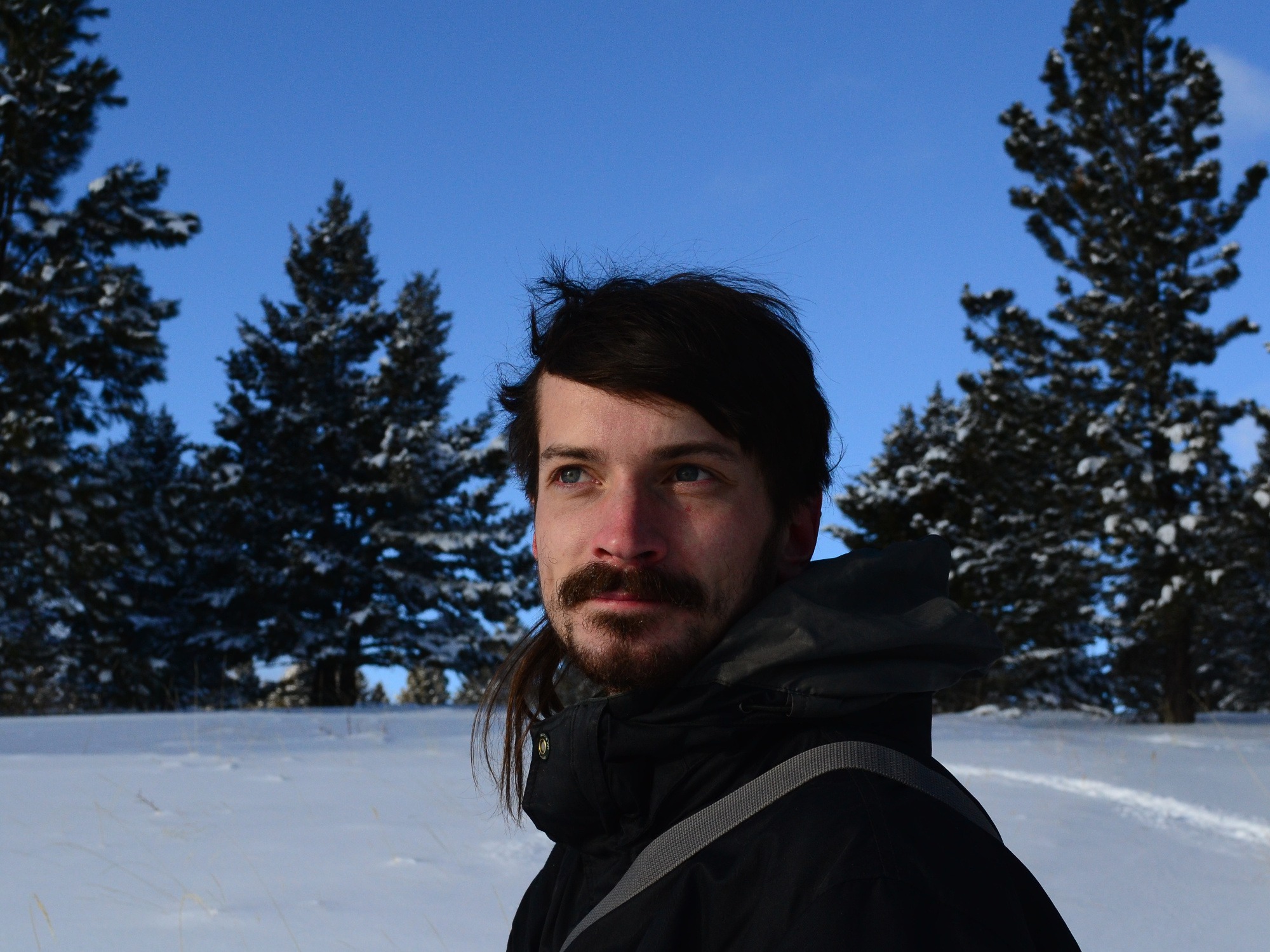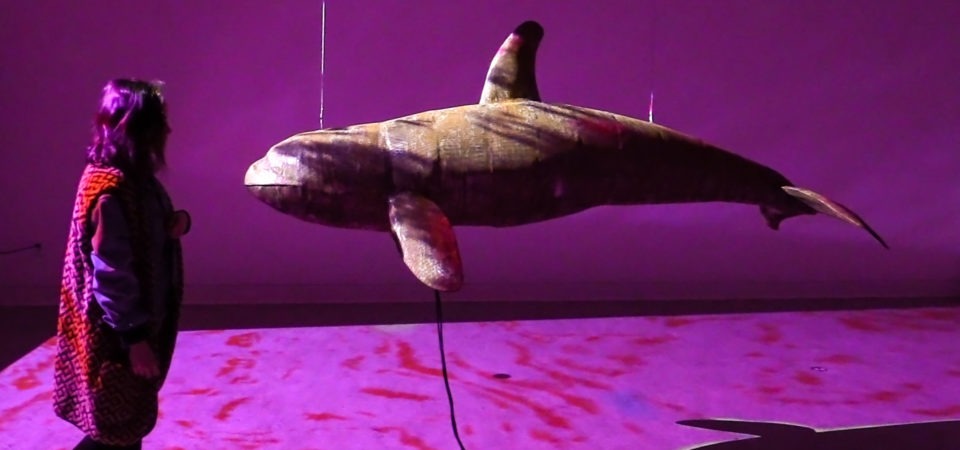Resonant Disintegration, 2017, interactive installation by Colton Hash
Throughout the past decade, I have focused my interdisciplinary foundations in Visual Arts, Computer Science and Environmental Studies to create impactful artworks that engage with climate change. I direct my technical skills to create interactive experiences that foster more nuanced and complex thinking about our cultural relationships with the natural world. I am honored to have had numerous opportunities to exhibit digital artworks in both conceptual art galleries and science museums, engaging with academic audiences and the general public to foster deeper conversations about ecological issues.

Red Mountain after pine beetle epidemic, 2007, South Helena National Forest, Montana
I grew up in a home surrounded by forests within the Rocky Mountains of Montana, where I experienced the seasonal threat of wildfire. Each summer the skies turned orange from persistent smoke, and we often faced the potential of evacuation. When I was in highschool, the Rocky Mountain Pine Beetle epidemic swept through Montana, killing the majority of lodgepole and ponderosa pine trees within just a few years. I was fortunate enough to have had conversations with various biologists and ecologists during this time, where I learned how these events were related to mismanagement of forest ecosystems and human-driven climate change. When I moved to British Columbia to study at the University of Victoria, I continued to learn about the implications of climate change and later became involved with climate justice community organizing. As an artist and activist, I have continually sought solace and inspiration from coastal and forest ecosystems across the Pacific Northwest.
My personal observations in nature, academic education and social experiences inspire my cross-disciplinary art practice and inform my understanding of the complex future we face. I recently completed my MFA in Visual Arts at UVic, where I created digital artworks that engage viewers with the impacts of the anthropocene. I am currently working on a research project, funded by the Canada Art Council, to create interactive simulations that depict complex relationships between the biosphere, climate and industrial society. At 30 years old, I am grateful to be supported as a professional artist, but I remain gravely concerned about our collective future. I balance computer programming work with time spent with my family and community, and I continually learn about the natural world while hiking and gardening.
Data Visualization
Over the past few years, I have explored data visualization as a creative medium to consider climate change and cumulative impacts of resource extraction. I have developed various methods to integrate climate model data, satellite imagery and landscape data into interactive artworks. Through my data visualization artworks, I present high-level perspectives for viewers to consider the implications of the anthropocene across large spatial and temporal scales. Data visualization can be a powerful tool to highlight past and present realities relating to ecological change and industrial development.
Resonant Disintegration, 2017, Interactive installation, metal sculpture surrounded by projection of regional climate data
Using climate model data to animate an immersive installation, I created Resonant Disintegration (2017) to foster intimate space for viewers to reflect on their relationships to local marine ecosystems. This multimedia installation features a life-size sculpture of an adolescent orca. Its form is suspended in a gallery space and is surrounded by a projection of CCCma climate data, depicting a century of warming conditions. Viewers are invited to physically interact with the sculpture, enhancing their presence in this emotionally driven space. Resonant Disintegration fosters empathetic connections to marine life while immersing viewers in a visualization of a drastically changing climate.
Carbon Pulse: The Salish Sea, 2021, Interactive data visualization, greenhouse gas emissions data integrated into a virtual landscape
Carbon Pulse (2021) is a series of landscape visualizations that depict greenhouse gas emissions emanating from urban and industrial centers. Defined by government emissions data, clouds of pollution flow from particular industrial operations and spread into the animated environment. As viewers approach the display, their silhouette is recorded by a depth sensor which is used to reveal energy infrastructure connected to these facilities. Rather than individualizing viewers as being responsible for climate change, Carbon Pulse fosters consideration unto industrial sources of pollution and centers of economic power.
Generative Simulations
As a parallel practice, I am interested in creating interactive simulations where viewers can dynamically engage with a virtual ecosystem. My generative artworks are created from custom software systems that produce unique digital landscapes. These artworks continually evolve and can be influenced by viewer interaction, stimulating imaginative understandings of ecological relationships. I am increasingly drawn to create artworks that depict collapse, renewal and resilience amidst climate change.
Evolutionary Forest, 2022, Generative simulation, dynamic ecosystem adapts to wildfire and disease events driven by changes to virtual climate
Evolutionary Forest (2022) is a digital simulation that depicts impacts from wildfire and disease events within a continually changing ecosystem. Each iteration of Evolutionary Forest produces a unique assemblage of tree species defined by various genetic variables. Trees respond to landscape conditions and compete for sunlight, nutrients and moisture. With moderate disturbance from wildfire and disease events, the ecosystem becomes more resilient and diverse over time. However, Evolutionary Forest also incorporates climate variables that influence tree growth and impact the severity of disturbance events. Rapid changes in the virtual climate result in dramatic transformations of the landscape. The ecosystem may still function amidst more severe conditions, although with less biodiversity and stability than a more temperate climate. Evolutionary Forest allows viewers to experience centuries of ecological change over the course of a few minutes, fostering consideration of how different environments may respond to various degrees of disruption.
Uncertain Associations, 2022, Dynamic-interactive installation, buildings are constructed from viewer interaction and decay amidst virtual landscape
Uncertain Associations (2022) is a dynamic-interactive installation that depicts growth and decay of urban structures amidst an evolving forest ecosystem. As viewers navigate through the gallery space of Uncertain Associations, buildings are created in the digital landscape corresponding to where viewers stand still. As structures rise from clearings in vegetation, they remain until they are abandoned and eventually disintegrate back into the soil. A wide range of present realities and potential futures may exist within this imaginative simulation, reinforced by a dynamic soundscape that enhances emotional presence. Uncertain Associations produces a meditative space for viewers to consider urbanization and habitation amidst a continually changing environment.
Conclusion
As I grew up in a world defined by climate change, I identify as a climate youth. In the past decade, I have experienced firsthand the impacts of drought, heat waves, mega-wildfires and severe flooding events. I am aware of how more frequent and extreme weather may trigger collapse in both ecosystems and human communities in the near future. I am deeply anxious about political inaction to mitigate impacts from industrialization and ongoing colonization of indigenous territories for resource extraction. However, I hold hope for the potential of the arts to foster transformative cultural change, in conjunction with social activism and economic revolution. No matter what future we face, I believe that sowing cultural seeds and fostering more nuanced conversations through art is critically important for mutual resilience.

Colton Hash is a digital artist who currently resides as an uninvited guest on Lekwungen territories of Vancouver Island. Hash’s multimedia practice is inspired by the wild and anthropogenic landscapes that surround him. Exploring generative simulation and environmental data as digital material, Hash strives to create accessible works for viewers to consider their cultural relationships with nature. In recognition of his politically oriented practice, Hash received the Witness Legacy Award for Social Purpose and Responsibility Through Art (ProArt Alliance in 2019) and was a finalist for the Emerging Digital Artists Award (EQ Bank, 2019). Hash received his MFA in Visual Arts from the University of Victoria in Canada.
This article is part of the MAHB Arts Community’s More About the Arts and the Anthropocene. If you are an artist interested in sharing your thoughts and artwork as it relates to the topic, please send a message to Michele Guieu, Eco-Artist and MAHB Art Director: michele@mahbonline.org.
Thank you.

